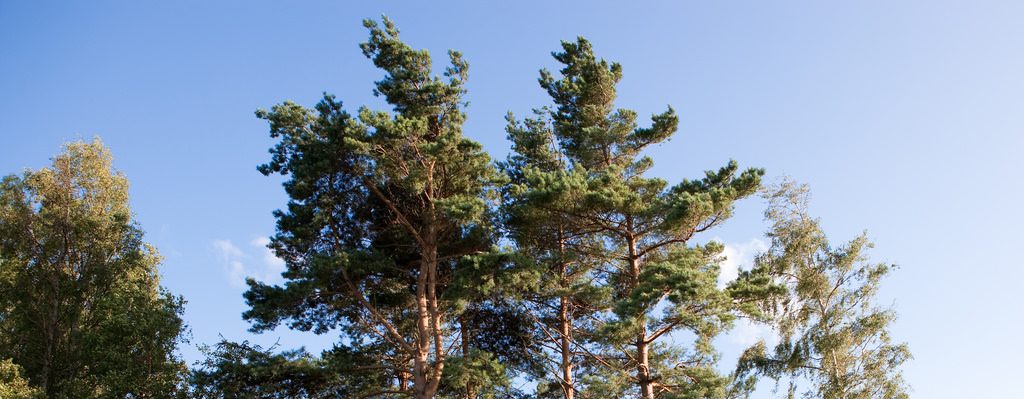

Jane Molony, ICFPA president, with Sumitomo’s Ichiro Nakajima and Masataka Hayama, chair of Japan Paper Associations. Photo: ICFPA
Tall timber buildings was just one of the topics deliberated at the recent annual meeting of the International Council of Forest & Paper Associations (ICFPA) in Tokyo, Japan. Country representatives discussed global priorities around climate change, tree breeding research and the role of the sector in the bio-economy.
With Tokyo as the host city, it would be remiss not to have examined plans by Sumitomo Forestry to build a 350-metre high hybrid timber skyscraper to mark the company’s 350th anniversary in 2041.
Named W350, the ambitious 70-storey tower will be almost four times higher than the 18-storey Brock Commons Student Residence in Vancouver, Canada, which currently holds the record for the tallest timber building in the world. The skyscraper has been designed by Sumitomo’s Tsukuba Research Laboratory in collaboration with Tokyo practice Nikken Sekkei. It will be Japan’s tallest building.
The company says it will be a ‘wood and steel hybrid structure of the right materials in the right places’ with a timber to steel ratio of 9:1. It is expected that 185,000 cubic metres of wood will be used in its construction. But where will it come from?
“They will grow the trees,” remarks ICFPA president and executive director of the Paper Manufacturers Association of South Africa Jane Molony. “Tree breeding forms an integral part of the W350 project, and Sumitomo envisages a convergence of materials, biorefinery and tissue culture technologies.”
Green shoots of innovation
“On the one hand, the sector has seen printing and writing grade production and consumption continue its downward trend with machines either closing or converting to more profitable grades,” explains Molony. “We have seen the death of some grades but now we witness the emergence of so much that is new, that is hopeful; green shoots are everywhere.”
Like the phoenix rising, Molony says that nano-cellulose is being commercially produced in Japan. “We see investment in biofuel in Finland, xylitol being produced from waste streams in South Africa and we have gene editing potentially making the world a safer place by curing disease and providing a valuable tool to produce more from less.”
All this made possible from the humble tree.
Biotech boon
“The forest product sector is entering a remarkably exciting era, especially in tree breeding and wood science research and exploring the use of wood as a renewable, low carbon material in the bioeconomy,” she says.
“As a sector, we have to respond with considerable urgency to the challenges and opportunities that we are currently experiencing, and to this end, there has been significant development in innovative biotechnologies that facilitate faster, more precise and efficient tree breeding.”
The forest and paper sectors face increasing pressure to meet demand. Issues such as vulnerability to pests and disease, along with competing uses for natural resources, require accelerated adaptation to climate change effects. There is also a need to improve the quality and quantity of products.
A number of interventions are being developed around the world to:• Increase yields while retaining environmental integrity.
• Promote climate adaptation to optimise resource use and increase resistance to pests and diseases.
• Limit the growth of invasive tree species outside controlled plantation areas.
• Optimise downstream value chains and reduce wastage.
• Increase food security.
• Educate landowners and wider communities about the benefits of tree planting.
Planted trees find their place
While timber plantations represent only 7% of the planet’s forest area, they provide half of the wood for industrial purposes. There is the global transition towards a bio-based industry that uses renewable materials to replace finite, petroleum-derived products. “The forestry sector is well-placed to serve this transition, not only at research level but also on the ground,” says Molony.
With the formal timber sector employing about 13.7 million workers globally and generating a gross value add of more than USD600 billion each year, it is a key contributor to the economy of many countries. It is also an important component in terms of giving effect to the Climate Change Paris Agreement through carbon sequestration while the goods and services provided by forests make significant contributions towards the achievement of the UN Sustainable Development Goals.
The ICFPA meeting heard presentations on health and safety and a chain-of-custody standard for wood and wood products being finalised by the International Organisation for Standardisation (ISO).